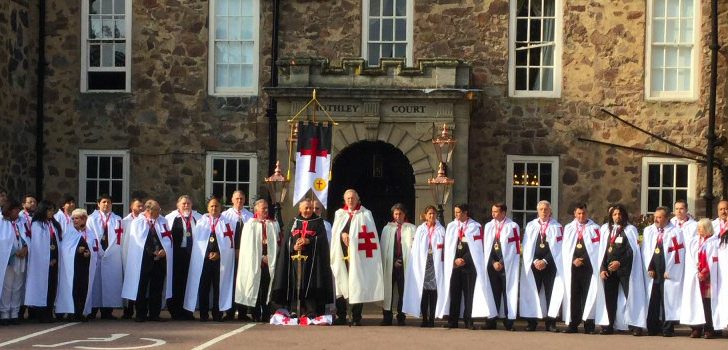Soldiers of Christ: The Knights Hospitaller and the Knights Templar in Medieval Ireland
ed. Martin Browne OSB and Colmán Ó Clabaigh OSB (Four Courts Press, €50.00 hb)
Ever since the controversy over The Da Vinci Code the Knights Templar have become a stock item in books from ‘alternative historians’ who have produced so many strange and misleading claims. Ordinary readers will have been left puzzled about what is the real truth about the military orders of the Church.
Here however is a breath of fresh air, which gives many fascinating insights into the history of the Templars and the Hospitallers in Ireland, a subject little studied until a recent date, but which can be now seen as of great importance to Church and state in Norman times. They emerge as among the most influential orders of the day.
In this volume the editors have assembled revised versions of papers presented two years ago at a conference in Glenstal, some 20 contributions in all.
Settlements
They are arranged loosely in chronological order beginning with papers on the coming of the order to Ireland and their settlements here, before moving on to deal authoritatively with aspects of their domains, activities, decline and disappearance.
In these papers, which will be read with interest by national and local historians, a wide range of aspects of their life here in Ireland are dealt with.
There is even room for a paper by one of the editors on “prayer, poetry and politics” about the literary aspects of the Templars.
Their legacy lingered on a long time. Writing on Temple House in Sligo, Kieran O’Connor and Paul Naessens focus on the evolution of one of their strongholds into a great house of the landed gentry in a later era.
The Knights Hospitaller and the Knights Templar arose out of the crusades in the 12th Century. There is little consciousness in Ireland of Irish involvement in the crusades. But new evidence about this has been emerging, linking Irishmen directly with events in the Middle East in 12th Century.
In his foreword, Fra’ Matthew Festing, Grand Master of the Knights of St John of Jerusalem, reminds readers that these orders were intended to aid the poor of Jesus Christ and the welfare of Christians in the Holy Land, and that “seldom have the order’s activities been more necessary that they are today”. P.C.


 Peter Costello
Peter Costello Knights Templar
Knights Templar